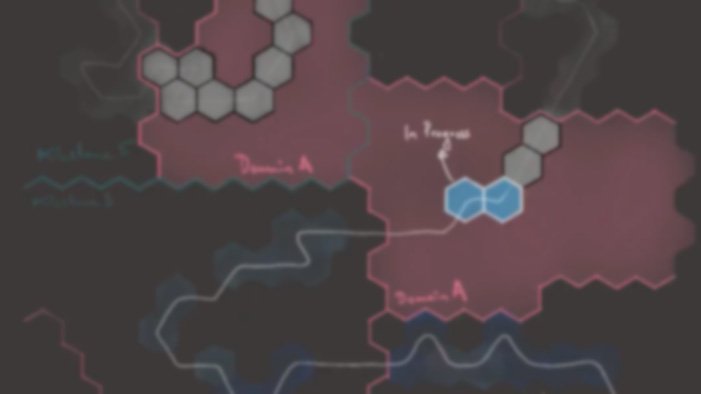
The Map of Mathematics
I had been working with the client for over 4 years and, during this time, we had made several attempts at creating a visual ‘map’ of any given subject. However, each effort was driven from another team member’s point of view, and what we ended up with never satisfied me personally. So eventually, I just went ahead and did it my own way. This is a little glimpse into my thought process…
The Ingredients
The Skyline
The “Skyline” was our first attempt at developing a visual representation of a subject. While saleable, it proved incapable of supporting our vision of developing an immersive “GPS for Learning”.
The Tile
What we needed was to have a fully-functional, Lowest Common Denominator. I called this the Tile. It would be here that most of the action would take place, so it had to be carefully considered.
The Map
Thankfully, we weren’t restricted by having to represent a pre-existing “topography” on our map, and could instead use the opportunity to devise our own, and develop a scale appropriate to our cause.
The Skyline
The “Skyline” is the way we currently represent our map of a subject. It is the thick white line that crawls above the dark blue squares in each column. I’m sure you can see why we call it a Skyline, so I will not expand further on that. I will however, try to make sense of the rest of the image, because it is central to the problem we’re trying to solve.
The squares are a single Competency. Competencies are further divided into micro-competencies, and have content (assessments, collections, activities) and metadata (alt concepts, mis-concepts, pre-requisite knowledge, classification info, etc). Additionally, they are used to generate the individualized route for each student. Competencies have 3 states - Not Started, In progress, and Mastered, indicated by gradated colours. Grouped together, several competencies make up a Topic (not shown on this map). Grouped vertically, several topics make up a Domain (the columns). Above domains in the pecking order come Milestones (also not shown on the map), which are several topics, but grouped horizontally. Milestones outline the course material for each Grade (1-10 and onwards) of the student’s academic journey.
While the logic behind this hierarchy is sound, the logic behind the display is somewhat thin. My thinking is that any interface that requires one-and-a-half paragraphs to introduce, could do with improvement…
Meanwhile behind the scenes, we had been developing the framework for our GPS-for-Learning, which we called the “Navigator”. This design carefully re-articulated several already-familiar features of Google’s Maps application with National, State and local systems of learning, along with their content. Our goal was to develop a user-experience that was informative, in-depth and familiar to use, so students could focus on their course, rather than learning the application.
The Tile
Navigation
The first interaction point with the tile was navigation. It had to tell you where you were, the route you were on, and what was around you.
Content
Next, it had to show you how much content was around you. We had clearly defined our content packets, so all that had to be done was decide how much content to display.
Metadata
Finally, we had to show a significant amount of metadata about the location. Things like alternative concepts, mis-conceptions, micro-competencies, etc.
The Map
Thankfully, we weren’t restricted by having to represent a pre-existing “topography” on our map, and could instead use the opportunity to devise our own topography.
We also needed a scale, that we could zoom in or out with. It needed to account for 2 things; information and action. At the top end of the scale sat all the information, displayed visually for easy consumption. At the bottom end of the scale sat the action, where all the interactions would take place.


